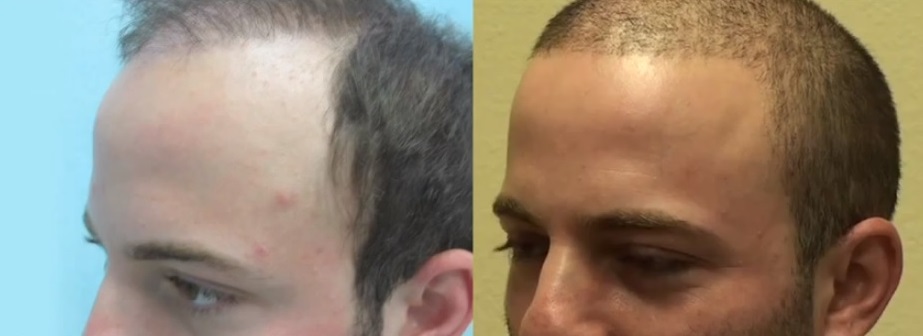HAIR LOSS
Hair loss is an endemic problem, plaguing millions of people across the globe. Whether a person suffers with hair loss at the hands of alopecia areata, lupus, traction alopecia, or pattern baldness, all have a negative impact on social, emotional, and professional outlets. There are upwards of 40 million American men and 21 million American women enduring thinning hair at the current moment.
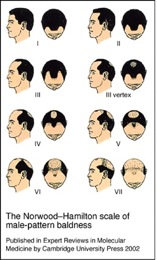
The leading hair loss culprit—pattern baldness, aka androgenic alopecia—starts as weak androgen receptors passed through the paternal or maternal X chromosomes, which cause the scalp hair of offspring to be vulnerable to dihydrotestosterone’s miniaturizing effects. DHT will shrink susceptible follicles to nonexistence, leaving the inheritor with some degree of baldness. In men, this baldness becomes a receding hairline or thinning crown. In women, it becomes a diffuse loss over the top of the head. Hair restoration videos most often show a reversal of pattern baldness as the origin of hair loss.
Less severe causes of hair loss (usually temporary) include untreated thyroid problems, diabetes, anemia, pregnancy, and malnourishment, among others.

HAIR RESTORATION
There are several methods of hair restoration, surgical and non-surgical. They include, but are not limited to:
- Minoxidil (Rogaine)
- Finasteride (Propecia)
- Scalp reduction
- Temporoparietal-occipital flap surgery
- Punch grafting
- Mico-grafting
- Follicular unit transplant/strip harvesting (FUT)
- Follicular unit extraction (FUE)
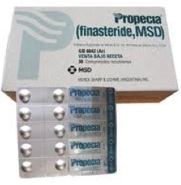
Both Rogaine and Propecia are FDA approved medications proven to stop hair loss. Although neither is effective for hairline recession, must be used at the early onset of thinning to be most successful, and have potential health risks and side effects, these are the best non-surgical methods available. Scalp reduction and flap surgery are largely outdated, considered highly invasive and capable of causing irreparable nerve damage and disfigurement. Punch grafting and micro-grafting are both obsolete.
Hair restoration is commonly done through FUE or FUT. The 4mm punch of the old punch grafting technique has been completely abandoned and replaced with the .8-1.2mm punch of follicular unit extraction (FUE). And FUT removes the donor hairs by cutting a strip of hair-bearing flesh from the back of the patient’s head.
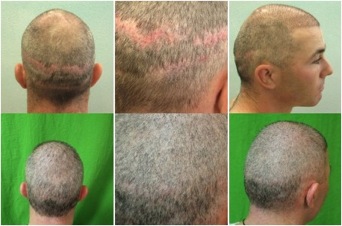
So which surgical hair restoration method is better? Follicular unit extraction is a microsurgical technique, considered less invasive than FUT because it does not use staples, does not require wound sutures, and does not leave a linear scar. It also enables a superior aesthetic result, since the individual graft extraction allows for specific donor hairs to be selected (i.e. nape hairs used in hairline creation produce a soft, natural-looking result). Follicular unit transplant is a quicker procedure and sometimes less expensive, but the strip scar confines the patient to a lifetime of long hairstyles.
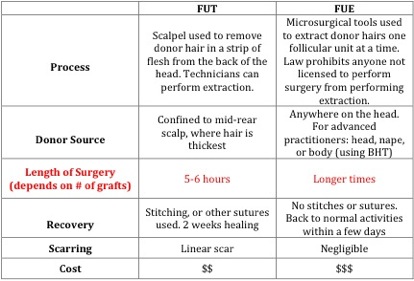
PATIENT VIDEOS AND PHOTOS
Videos (and photos) are to be used as a resource and guiding tool for choosing the right technique and surgeon in order to get the best results. To get the most out of any videos or photos, the viewer should carefully examine the hairline creation, crown whorl design and detail, and the evenness of coverage. Also, consider the spacing of grafts, how well they are angled, and whether the directional placement is accurate.
Video footage should show the patient in focus and in good lighting, in an uninterrupted 360-degree circular pan, both before and after. Photos should show several different angles as well. Do not trust images that appear retouched, edited, or tampered with in any way.
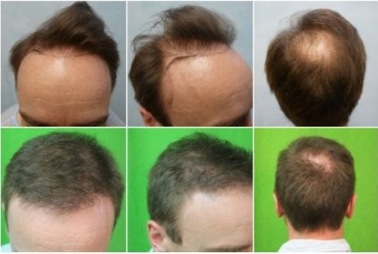
FAQ
How do I know if a surgeon is good, besides reviewing his/her hair restoration videos?
A surgeon is usually good if he/she is well-respected in the field, has years of experience with enduring success, has a board certification in plastic surgery or dermatology, and continues researching and publishing his/her findings and developments.
How much does FUE hair restoration cost?
Most FUE clinics charge between $5 and $12 for each graft. Multiplying this number by the quantity of grafts you wants or need, you can arrive at a rough cost.
Can women be considered for surgical hair restoration?
Yes, women can be candidates, as long as they are over 24 years of age, have ample donor hair, and have no medical history of atypical blood clotting, abnormal scarring tendencies, allergic reactions to anesthesia.
The use of hair follicles from the beard area is a new evolution with the are of Follicular Unit Extraction. Here is a video of a patient who received excellent results as a result of this technique. Click here to watch his testimony.

